Mary Walker reviews one British and three Kiwi non-fiction books for children of various ages and finds that, generally, they’re being done well. Here are books on biodiversity, space, sharks and feet!
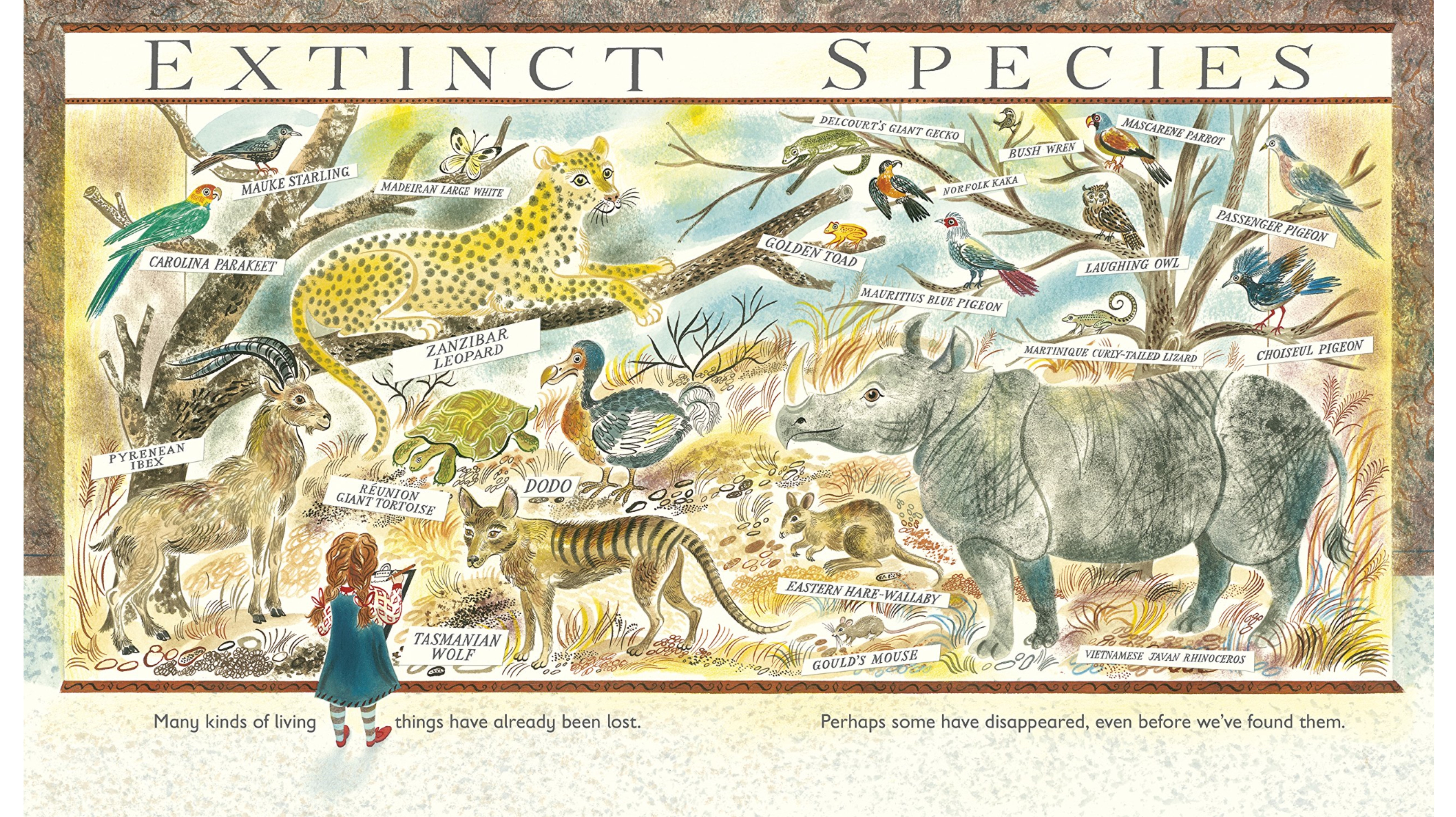
Books are big in our house. As a homeschooling family (with children aged nine, six and five years old), books of all kinds make up a large portion of our learning. Fiction gets a lot of airtime. But it’s the non-fiction books that get carted from bedroom to kitchen table, into the car and home again.
We all know great fiction can weave magic in a child’s world. But there is alchemy, too, in non-fiction. A good non-fiction book draws the child more deeply into the world they inhabit. Where fiction is a portal to other worlds, non-fiction is a portal into our own. Children can learn about places and art, science and people. About how their world was built, their place in the universe, and where their future may lie. They can learn about all that has come before them, and perhaps their place in what comes next.
Good children’s non-fiction books explain complicated ideas in an engaging and accessible way. Text, graphics and layout all play a part. But it is a clear angle or ‘story’ that transforms it from textbook to absorbing. These latest offerings all tackle it in different ways.
Whose Feet Are These? illustrates the scientific concept of adaptation through the feet of native New Zealand animals. Lots: The Diversity of Life on Earth is an illustrated introduction to biodiversity, aimed at younger children. New Zealand’s Great White Sharks: How Science is Revealing Their Secrets follows scientists in their quest to know more about the elusive great white shark. The Astarons: Cosmic Guardians combines fact and fiction to take readers on a story-based journey through the solar system.
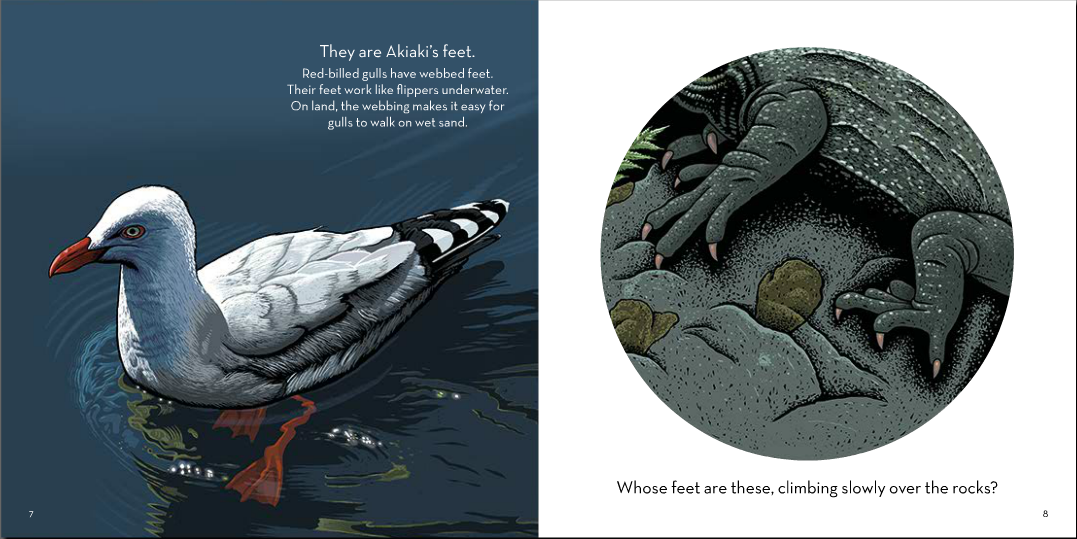
Whose Feet Are These? by Gillian Candler
Their feet are webbed, spiky, sharp or strangely sticky.
Can you guess an animal from its feet?
The latest junior science book from author Gillian Candler follows on from Whose Beak is This? Candler’s earlier series (which included the excellent In the Bush, Under the Ocean, and At the Beach) easily engaged children up to the age of eight or nine. Whose Feet Are These? is for slightly younger readers.
A hybrid of non-fiction and picture book, Whose Feet Are These? does justice to both. There are no cute rhymes here, but a rhythm and pattern to engage small children. Each new animal is introduced the same way: ‘Whose feet are these, climbing slowly over the rocks?’ The answer lies over the page, giving the child time to guess before the reveal. ‘They are Tuatara’s feet.’
The animal’s Maori name, common name and a short explanation of the animal’s feet follow. ‘Pied stilts have long legs for wading and long toes to stop them from sinking into the mud.’ It’s a clever idea. Even one small aspect of an animal tells us something about how it lives. The close-up picture of the feet feels like you’re looking through the lens of a telescope. Fraser Williamson’s illustrations are rich and life-like, saturated with colour.
The book ends with a page of information that might otherwise have spoiled the format of the book. Great nuggets like ‘What we call a bird’s foot is actually its toes. What looks like a backwards knee joint is a bird’s ankle joint.’ Really? Who knew!
The book promotes itself as being about the scientific concept of adaptation (how animals adapt to the habitat they live in), but the word ‘adapt’ doesn’t appear in the book. It would have been nice to see the term used. Small children can handle scientific terms, and it helps build an understanding of science and its place in the world.
It’s exciting to see children’s books like this being published here: New Zealand-focussed, smartly illustrated and good science, well explained.
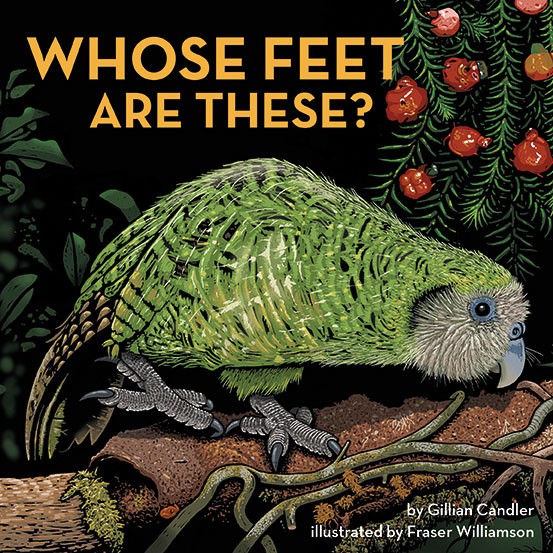
Whose Feet Are These?
By Gillian Candler
Illustrated by Fraser Williamson
Published by Potton & Burton
RRP $16.99
Lots: The Diversity of Life on Earth by Nicola Davies
There are plenty of books which introduce children to the world of animals, habitats and ecosystems. This is a particularly lovely one aimed at younger readers. It works as a read-aloud, and capable young readers will enjoy it for themselves.
Lots starts small, slowly building a picture of the volume and range of species in the world. It shifts nicely between the big picture and small details (did you know there can be 5,000 kinds of microbes in one teaspoon of soil?). It uses little examples to illustrate not just the diversity of life on Earth but the complexity of every aspect of it: ‘Baby frogs grow in pools of rainwater in leaves.’ That’s pretty much the whole lesson, right there: habitat, interdependence, climate.
Lots tackles a big subject but creates meaning without being wordy: ‘…the more we find, the more we learn about how living things depend on each other – for food, for places to live and for ways to grow.’ The words are kept simple and the illustrations shine. Young wildlife lovers will enjoy pages filled with a wide range of species to recognise or discover.
The vintage watercolour illustrations have the look of The Tiger Who Came to Tea. (The young girl could be Sophie: that hair and the vintage pinafore, coloured tights, classic shoe combo. Even the animals have the same doe-eyed, human look as the tiger.) It lends the book a familiar feel. Although I don’t think 1968 Sophie would have been a clipboard-carrying, scuba-diving scientist.
Lots is about biodiversity and, by extension, the impact humans are having on the planet: ‘The trouble is, all over the world, human beings are destroying bits of the pattern … poisoning the air, rivers and oceans. Taking too much from the sea. Building roads that cut forests into pieces … so that animals and plants disappear.’
Books that are didactic and moralistic often do not ring true on the page. And yet, we can’t care for what we don’t know about. Many parents do want accessible and gentle ways to introduce important issues to children. A book like Lots does it well. It neither skirts nor labours the issue.
We’ve read lots of books on this subject in our house, but I was still stopped short at one point: ‘Many kinds of living things have already been lost. Perhaps some have disappeared, even before we’ve found them.’ That just hadn’t occurred to me before.
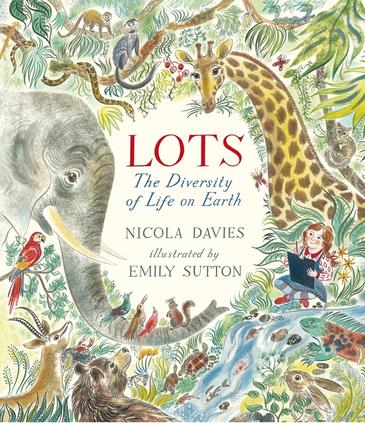
Astarons: Cosmic Guardians by Gilda Kirkpatrick
In Astarons: Cosmic Guardians (Vols. 1 and 2), nine guardians work together to protect the solar system. Each character reflects the nature of one of the eight planets (or the Sun, in the case of Lucan). Author Gilda Kirkpatrick’s vision is to bridge the gap between education and entertainment, so as the story unfolds, readers are also learning about astrophysics.
The solar system has been popular at different times with all three of our kids, so I was interested to see what they thought of Astarons. They’ve exhausted the library’s Space section, and new books are skimmed through pretty fast. When kids are familiar with a topic, they sift for what is new or what is presented in a new way. The Astarons books are full of action, and there was enough new information to keep them engaged (moonlets, neutronium, star diamonds?). They also got a kick out of seeing familiar planets brought to life as characters.
In Volume One, helpful tachyons (particles) are used by the Astarons to zip around the solar system faster than the speed of light. What is a tachyon exactly? Answers are provided by astrophysicists on the Astarons website. Fitzpatrick’s skilful interpretation keeps the language accessible for young readers. Not all parents will want their kids dropping the book and racing online to find the answers, so it will be interesting to see how the book/website interplay develops.
The plots are interesting and well-suited to a graphic novel. But it is the layout and glossy illustrations that really shine. Illustrator Myles Lawford has done a great job. Unfortunately, the flow of dialogue was confusing at times, and the use of dialect made a character hard to understand, rather than enhancing his personality. Further editing would tidy up these and other small errors.
So, do the Astarons books educate while they entertain? The concept is good, and most elements are in place. Despite it being some time since Space was the hot topic in our house, the Astarons kept the kids engaged. All three of them returned to the books more than once. That’s the funny thing about children’s books. Whilst bought by adults, it is children who read them. Ultimately it is they who drop the gavel. Despite any technical errors, the kids enjoyed the books. They ruled in Astarons’ favour.
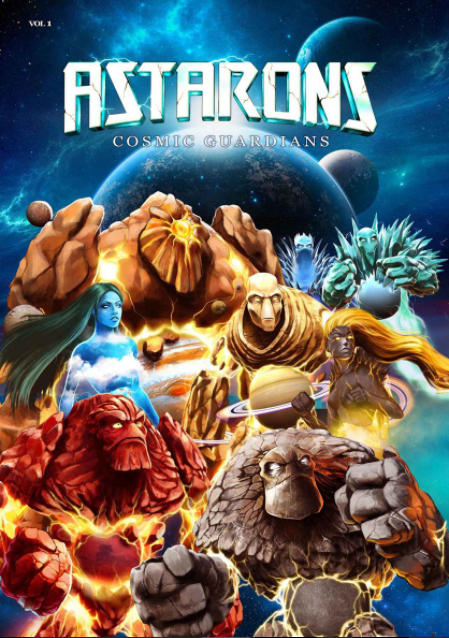
New Zealand’s Great White Sharks: How Science Is Revealing Their Secrets by Allison Ballance
We don’t know much about the great white sharks that live in New Zealand waters. They don’t need to surface for air (unlike whales), so sightings are rare. Great white sharks spend most of their life under the surface of the water; their movements and lifestyle invisible. This book follows a group of scientists as they try to uncover their secrets. We join the scientists as they tag sharks, building up data about where they live and where they travel.
The layout and graphics in this book feel fresh. While it is text-heavy compared to non-fiction for a younger audience, it doesn’t feel dense. Fact boxes and infographics appear throughout, drip-feeding you the science or the background as you need it. By the end, I felt I had a rounded picture of both great white sharks and the science surrounding them. Although marketed at young adults and older readers, shark-obsessed children would enjoy this book too (with a bit of help from an adult).
By the end of the book, it is evident humans are intruders in the shark’s world. The issue is not laboured, but an uncaptioned photo brings it home. An enormous female great white hauled onto a rocky shore by a tractor hangs, twisted, by her tail. The fisherman sports a smug smile, casually holding a cigarette and reclining against her massive belly. She was heavily pregnant at the time she was caught.
The book left me with questions. It concludes that ‘a healthy ocean needs a healthy population of sharks’. That feels right, but why exactly? Because of the role they play in the ecosystem? Do they keep the population of certain animals under control? Or because a declining population is a reflection of our impact on the planet generally?
Like scientists, non-fiction authors have to decide where to draw the line in terms of scope. That I have more questions may just prove the book has done its job. Good non-fiction leaves you informed, and curious.
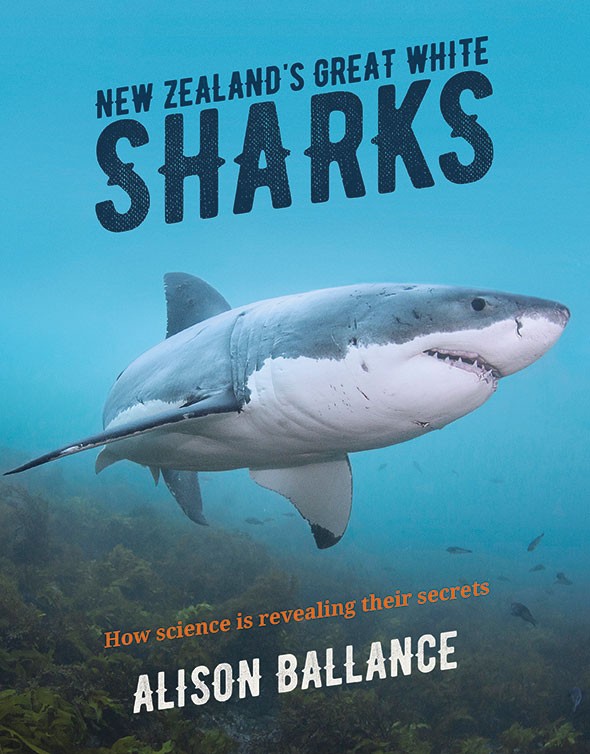
New Zealand’s Great White Sharks
By Alison Ballance
Published by Potton & Burton
RRP $29.99
Mary Walker
Mary Walker is a writer based in Wellington. Her favourite genres are junior fiction and factual books. She home-schools her three children, and is receiving an education all over again. She is deciding what to be when she grows up, second time round. The shortlist includes cosmologist, zoologist and botanist, but the field is still wide open.



